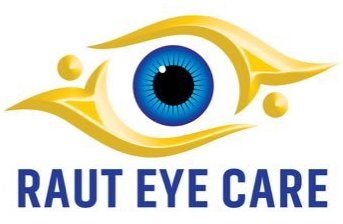Blogs for Lasik
List of articles for Lasik

Is Lasik Surgery Safe After Pregnancy?
Lasik surgery is one of the potential ways to get rid of glasses and contact lenses. Lasik or Laser-assisted in-situ keratomileusis is essentially a microsurgery, performed to reshape the cornea and correct common vision problems like myopia (nearsightedness), hyperopia (farsightedness), and astigmatism. What this Lasik surgery costs is absolutely worth it if we look at the benefits it offers. Undoubtedly this vision correction approach has improved millions of lives, however, it's vital to know that it brings in exceptions too such as pregnancy. Keep reading to explore why Lasik eye surgery can be an unfavorable incident for pregnancy and whether a LASIK surgery can be safe after pregnancy

Eye hospital in pune
Founded in 1987, Dr.Rajeev Raut Eye Clinic, is one of Pune's oldest and most reputed eye centers. With over 4 decades of experience treating complex vision disorders, our hospital guarentees a result, no matter what your visual complaint. With a staff of over 8 superspecialist opthalmologist, and nearly 45 support staff including optometriests, nurses our center is well equipped to solve all your eye care concerns under a single roof. FInd us at : 2a, Manisha Terrace, Moledina Road, Pune, Camp Call us At : 0206134441 Check the map for directions :

Will my number come back after lasik surgery?
Lasik has become one of the most popular surgery for getting rid of glasses. Whether my number will come back after few years is a common question that comes to one’s mind. Lasik surgery is a permanent treatment. In this corneal shape is altered which remains permanent. However with age certain changes take place internally in the eye that can give you blurred vision e.g when you develop cataract in old age if you develop diabetes in later age, in women hormonal changes can give blurred vision. You will also get reading glasses after 40-45 years of age.All this is unrelated to lasik surgery. In people who do extensive near work can develop blurred vision called pseudo myopia if adequate rest from near work is not taken but this is temporary. So with good technology and proper preoperative safety tests number coming back after lasik is almost impossible.

Contoura Vision Pune - Best lasik in pune
Contoura® Vision is a type of bladeless LASIK procedure that ensures your recovery period is optimised and post-op symptoms are minimised. It is a laser vision correction system. When you choose a Contoura® Vision procedure, you’re choosing a laser eye surgery that’s calibrated at the highest level of accuracy and personalization. At our hospital we perform contoura vision lasik surgery in Pune for all eligible patients.

Advancements in LASIK Surgery Techniques: What You Need to Know
LASIK, which stands for Laser-Assisted In Situ Keratomileusis, is a well-known and popular surgical treatment used to address vision disorders such as nearsightedness, farsightedness, and astigmatism. It is a form of refractive surgery intended to alter the cornea, the transparent front portion of the eye, in order to enhance how light enters the eye and is focused on the retina. LASIK surgery may reduce or get rid of the need for glasses or contact lenses by changing the shape of the cornea. In the following sections, we will explore some of the notable advancements in LASIK surgery techniques.

Femtolasik - Femtosecond Lasik laser eye surgery in Pune
Femtosecond LASIK or femto lasik is an advanced vision correction procedure, represents a groundbreaking leap in the field of refractive surgery for your eye. With its precise and tailored approach, Femtosecond LASIK offers a multitude of benefits that have transformed the lives of countless individuals seeking freedom from glasses and contact lenses.
Patient reviews:

Is lasik safe for me?
Lasik is the most popular surgery to get rid of glasses. One of the most important question that comes to mind is the safety of the procedure.
Lasik is one of the most studied and researched elective surgical procedure in the world. Lasik as a procedure is being done for more than 25 years and this procedure has got US FDA approval in 1998.
We follow very strict protocols and run a number of diagnostic scans for your eye to determine eligibility for lasik.
Scans like a topography, tomography, scheimflug images, Anterior segment oct, a thorough slit lamp examination , tear drop cytology are perofrmed and this data is analysed using predictive artifical intelligence alogirthms for safety and effectiveness.
The magnitude of your number and asatigmatism are also taken into consideration.
Lasik surgery is completely safe and effective for those who pass these tests.
Bladeless lasik surgery with contoura greatly increases the safety profile of lasik.
Approximately 20 % of people who want to do lasik surgery are not suitable for lasik for variety of health and medical reasons including thin and damaged cornea, keratoconus or some chronic conditions such as uncontrolled diabetes and autoimmune diseases.
For these patients other lasers and modes of treatment are available to get rid of glasses like ICL, Refractive lens exchange, PRK or ASA.
At our clinic we have the most advanced technology and machines to do the safety tests including Pentacam, Visionix, Topolyser, Anterior Segment OCT , IOL master and ascan.
Get your eyes examined professionally and thoroughly at our clinic to know if your a eligible candidate.

Lasik surgery meaning
In the quest for perfect vision, LASIK (Laser-Assisted In Situ Keratomileusis) has emerged as a transformative solution for millions of people worldwide. This groundbreaking surgical procedure has revolutionized the field of ophthalmology, allowing individuals with nearsightedness, farsightedness, and astigmatism to bid farewell to corrective lenses and experience the world with newfound clarity. But what exactly is LASIK, and what does it mean for those who undergo this life-changing procedure?
At its core, LASIK is a refractive surgery technique that reshapes the cornea, the transparent front part of the eye, to correct refractive errors. These errors occur when the shape of the cornea or the length of the eyeball causes light to focus improperly on the retina, resulting in blurry vision. By precisely reshaping the cornea using an excimer laser, LASIK allows light to properly focus on the retina, thus improving vision.
The process of LASIK begins with a comprehensive eye examination by a qualified ophthalmologist or optometrist. This examination determines the eligibility of the patient for the procedure and helps the surgeon develop a personalized treatment plan. Factors such as corneal thickness, refractive errors, and overall eye health are taken into account during this evaluation.
Once a patient is deemed suitable for LASIK, the surgery is typically performed in an outpatient setting and takes only a few minutes per eye. Local anesthesia is administered to numb the eye, ensuring a painless experience for the patient. The surgeon then creates a thin flap in the cornea, either using a microkeratome (a mechanical blade) or a femtosecond laser. This flap is carefully lifted, exposing the underlying corneal tissue.
Using an excimer laser, the surgeon reshapes the cornea by removing microscopic amounts of tissue. The excimer laser employs a cool ultraviolet beam of light that precisely sculpts the cornea, guided by a detailed map of the patient's eye measurements. This step is crucial as it corrects the specific refractive error unique to each individual.
Once the cornea is reshaped, the surgeon repositions the corneal flap, which adheres naturally without the need for sutures. The cornea begins to heal immediately, and the flap serves as a natural bandage, minimizing discomfort and aiding in the rapid recovery of the patient. Typically, the eyes are shielded with protective goggles to prevent accidental rubbing or irritation during the initial healing phase.
One of the remarkable aspects of LASIK is the speed at which vision improvement occurs. Most patients experience improved vision within 24 to 48 hours after the procedure. However, complete stabilization of vision may take a few weeks. It is important to follow the post-operative care instructions provided by the surgeon, which may include using prescribed eye drops, avoiding strenuous activities, and attending follow-up appointments to monitor progress.
The meaning of LASIK extends far beyond its technical aspects. For those who have lived with the inconvenience of glasses or contact lenses, LASIK offers newfound freedom and convenience. Activities like swimming, exercising, or even waking up in the morning become easier without the dependence on corrective eyewear. The psychological impact of improved vision should not be overlooked either, as LASIK can boost self-confidence and enhance overall quality of life.
It is crucial to note that while LASIK is a safe and effective procedure for the majority of individuals, not everyone may be a suitable candidate. Factors such as severe dry eye, thin corneas, and certain eye diseases may disqualify someone from undergoing LASIK. A thorough consultation with a qualified eye care professional is essential to determine individual eligibility.
In conclusion, LASIK surgery in pune has transformed the lives of countless individuals in pune by correcting refractive errors
CONTOURA LASIK SURGERY IN PUNE

Lasik surgery 18 years old
LASIK (Laser-Assisted In Situ Keratomileusis) has become a popular and effective method for vision correction, offering freedom from glasses and contact lenses to millions of people around the world. While traditionally considered a procedure for adults, more and more 18-year-olds are considering LASIK as a viable option to correct their vision early on. This article aims to explore the pros and cons of LASIK for 18-year-olds, shedding light on the factors that should be taken into consideration before making an informed decision. We perform the best lasik surgery in pune


